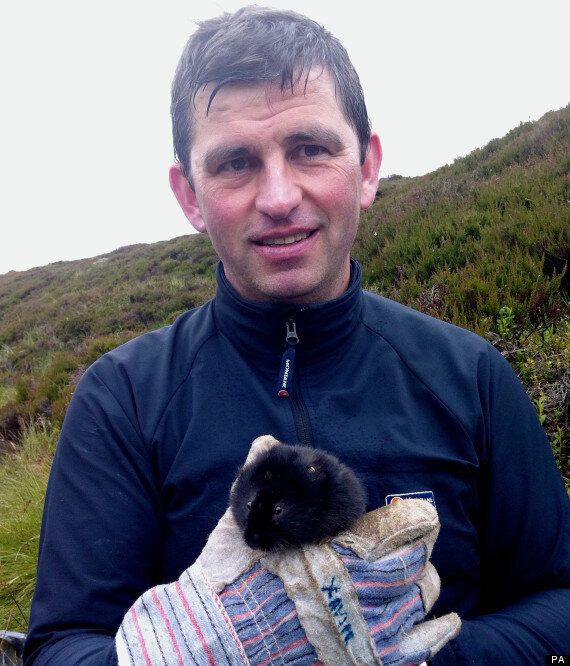Lonely water voles embark on epic journeys fraught with danger in search of a mate, scientists have learned.
Unlike home-loving Ratty in The Wind in the Willows, the hamster-sized mammals may trek for weeks across moors, bogland and mountains, covering distances of up to 15 kilometres.

The water vole travels for weeks to find a partner
Along the way they might have to dodge predators such as weasels, stoats and eagles - just as if straying into the Wild Wood of Kenneth Grahame's classic children's novel.
The heroic furry wanderers are trying to preserve their species, according to scientists who tracked and studied water voles in the highlands of Scotland.
Lead researcher Professor Xavier Lambin, from the University of Aberdeen, said: "These lonely heart water voles who live in small colonies know they can't breed with their relatives, and so they head off when their hormones kick in... they know they have to reproduce if they are to survive.
"If they stay at home they will have only their brothers and sisters as potential mates."
Water vole families are often separated by long distances, occupying isolated colonies on narrow ribbons of land alongside streams.
Both male and female voles strike out in search of suitable new sites on which to breed, said Prof Lambin.
"They will face a lot of dangers crossing unsuitable habitat to find a mate," he added.
"Sometimes they get to one suitable patch and will spend three or four days there looking for and waiting for a partner.
"If unlucky in love, they will head off again on their travels.
"What is amazing is that despite their small size, water voles can spend weeks and weeks covering great distances - much further than we expected - in their quest to find another water vole."

The small mammals travel to find a mate as not to breed with relatives
The scientists followed the voles for six weeks in the hills of Assynt, between Lochinver and Ullapool.
Animals routinely walked more than three kilometres, and a few travelled as far as 15 kilometres.
"These are stupendous distances, far beyond what we ever thought would be possible for a species of this size," Prof Lambin said, addressing the British Science Festival taking place at the University of Aberdeen.
The team also discovered that the destiny of one water vole colony often depended on what happened to its neighbours.
A catastrophe befalling one colony, such as disease or falling victim to predators, could produce a "wave of death" that spread out and affected others.
The findings may help conservation efforts aimed at protecting many other species, Prof Lambin said.
He added: "Knowledge of the way a fragmented population functions is crucial for conservation.
"Our research shows that water voles need a network of sites to survive; conserving only a single patch of land is no use.
"More and more of these populations are becoming fragmented because of human activities, and some are close to their tipping point.
"In order to protect them we need to know more about the birth and death of these populations.
"We have gained a new understanding of the ability of populations to survive in fragmented habitats.
"And we have improved understanding of the dynamics of a charismatic, much loved but endangered species in the UK."

Professor Xavier Lambin of the University of Aberdeen carried out the research
The water vole is legally protected in the UK.
Although sometimes called water rats, the creatures have rounder noses than rats, deep brown fur, and tails, paws and ears covered in hair.
In the wild, the water vole may only live for around five months. They can survive as long as two years in captivity.